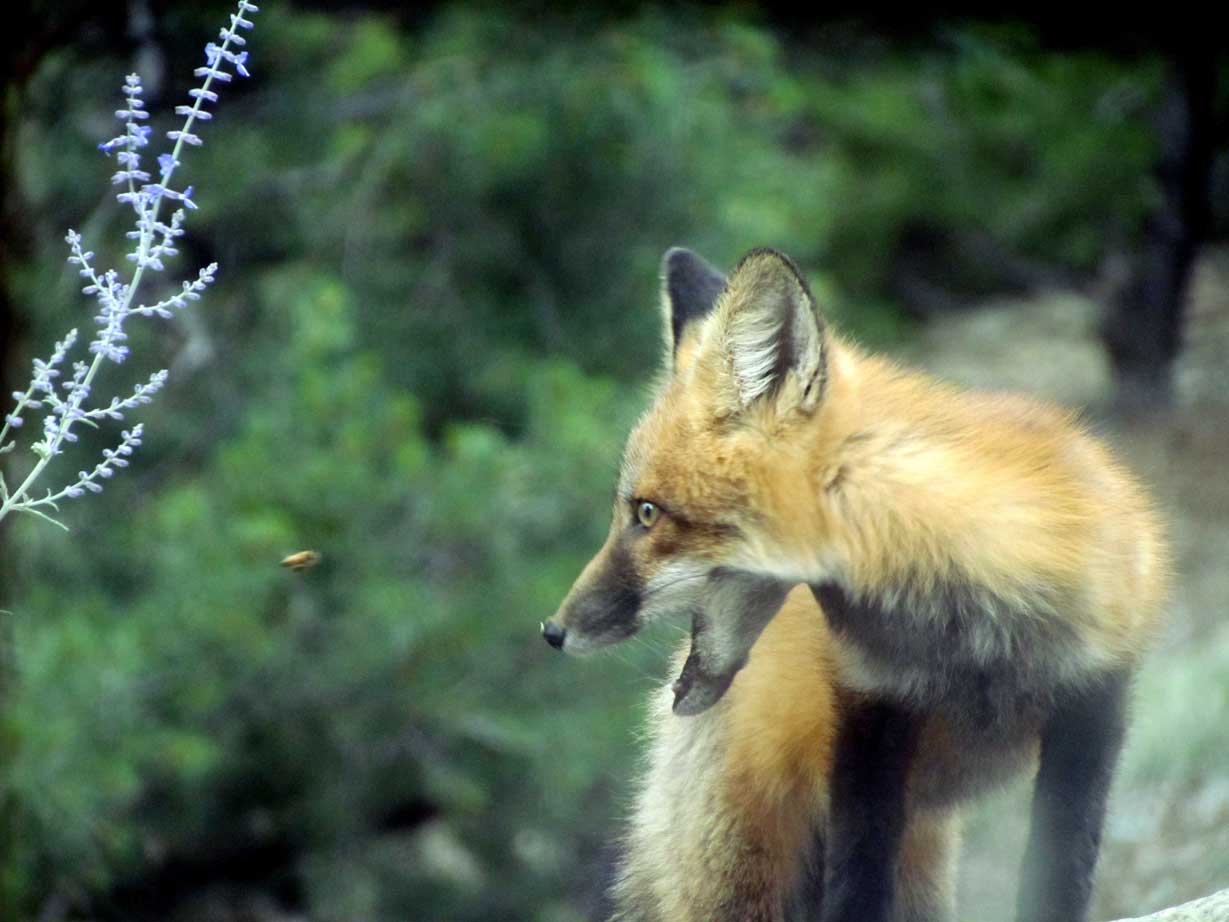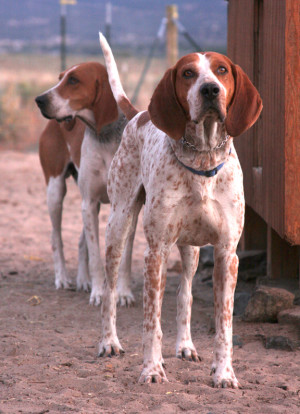by Tina Mitchell

In the darkening dusk, my husband said quietly: “Your little friend is back.” I snuck to the window to see one of the local gray foxes heading for the spilled seed under our bird feeders. Such a wary, gorgeous, dainty little predator!
October often brings increased sightings of foxes: The young have matured and are beginning to disperse to find new territories. Central Colorado hosts two species of fox. Red foxes tend to inhabit the moister riparian areas of creeks and the Arkansas River, while gray foxes prefer the drier, brushy areas in canyons and foothills. Swift foxes resemble gray foxes, but as short- and mid-grass-prairie inhabitants, they keep to the eastern plains in our state.
The red fox holds the honor of the most widely distributed carnivore in the world, in large part due to its ability to thrive in many habitats. Although several color phases exist – e.g., black, silver, cross – a red fox most commonly has a reddish back and a white belly; black nose, backs of the ears, legs, and feet; and a bushy tail distinctively tipped with white. Whatever the color morph, you can clinch an ID of a red fox by checking for that white tail tip. No other species that might look like a red fox has that feature.
Typically a bit smaller and more skittish than its red relative, the gray fox is grayish brown above with a dark streak down its spine; its muzzle shows black, as do the midline and tip of the tail. Because it prefers heavier cover and is more nocturnal than a red fox, humans generally see a gray fox less often. When disturbed, a gray fox will more likely slink away into cover rather than dash for the nearest hill, as a red fox will. Grays will also easily climb a tree to escape a predator or for food, such as to raid a nest of young birds.
[InContentAdTwo]
Foxes produce a musk odor in their urine. To my nose, it seems like a skunk smell without the intensity. Coyotes have a similar but stronger musk odor, although still not as strong as a skunk’s defensive spray. If you catch a whiff when you’re out and about, you know one of these canids frequents that area.
A fox’s favorite meal is any kind of small rodent – e.g., chipmunk, mice, rats and voles. But it eats almost anything it can catch, ranging from insects and birds to cottontails. Berries and other fruits, nuts, vegetables, carrion and even some grains round out the menu. And of course, spilled birdseed – and the rodents attracted to it – offers a tasty treat as well.
Foxes share a number of interesting similarities with the feline family. Similar to cats, the claws on a fox’s front paws retract a bit. In fact, one way to distinguish a fox footprint from that of a small dog is by this lack of claw marks. A fox’s sensitive whiskers are proportionately longer than those of most other canids – again, much like a cat’s. Foxes have vertical, elliptical pupils, as do cats, rather than the round pupils found in other canines. Foxes in captivity (e.g., in zoos or wildlife rehab) need more taurine – an amino acid important to felines – and are typically fed some cat food to meet these higher nutritional requirements. A fox also stalks larger quarry, such as rabbits, cautiously synchronizing its movements with those of the prey, much as cats do. It then either pounces on the unsuspecting target from above (à la feline) or, less often, runs it down (à la canine). But have no fear – the fox has always been and will likely continue to be firmly ensconced in the canine family.
Stories about these crafty critters have captivated humans for millennia. As far back as Aesop’s Fables, circa 600 B.C., a fox has co-starred with a crow, some grapes, a mask, a lion, a stork, a weasel and a woodsman, among others. Loved by farmers plagued with an overabundance of mice, despised by owners of free-ranging fowl, respected by wildlife watchers, resented by bird hunters – foxes have faced many challenges. But the collapse of the fur industry, the abolishment of most bounty programs, and better ways to keep foxes out of both the proverbial and the literal henhouse have improved matters for foxes. So if you live in the vicinity of a fox, enjoy the your free, all-natural rodent control service silently patrolling the premises.
Tina Mitchell watches nature with her human and canine family from their perch in the piñon/juniper habitat of western Fremont County. When she needs to pay the bills, she shows up as a research psychologist on the University of Colorado Anschutz Medical Campus in Aurora.



